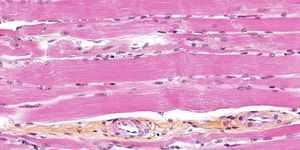New Details About Quality Control of RNA by Cells
Genes are the blueprint for an organism, they contain the instructions to build functional cells. But those instructional messages in genes have to be properly interpreted and carried out by the cell. An intermediary between the genes DNA and the proteins that compose cells, is messenger RNA (mRNA) - watch the video below to learn more. Sometimes that mRNA contains errors, however, and the cell has some quality control mechanisms that can hone in on that faulty mRNA and destroy it. New research by investigators at Case Western Reserve University School of Medicine, published in Nature Communications, has outlined one such method the cell uses for identifying and taking out errors. The work indicates that the ribosome, which is responsible for the synthesis of new proteins, communicates directly with the protein complex that targets and obliterates erroneous mRNA.
"We aimed to understand how cells are able to recognize mRNA that is defective and distinguish it from normal mRNA. For most cells this process is critical for survival, but we didn't yet understand how it works, especially when the difference between the two is very subtle," said study leader Kristian Baker PhD, an Associate Professor in the Center for RNA Molecular Biology at Case Western Reserve University School of Medicine. "Our findings clearly show that surveillance machinery involved in identifying faulty mRNA functionally interacts with the ribosome, the apparatus responsible for synthesizing proteins in the cell. It is now clear that these two elements communicate and work closely together to recognize and eliminate aberrant mRNA from the cell."
One error that can be introduced into mRNA is a premature stop codons, so-called because they stop the ribosome short of making a full, complete protein. Such aberrant proteins can not only be non-functional, they could actually have a serious harmful effect on the cell. For this work, the research team studied the mechanisms used by the cell to find a premature stop codon and send the faulty mRNA for rapid degradation, minimizes or eliminating potential negative effects.
"Consider a car maker," said Baker. "If a faulty brake pedal sneaks past quality control and gets installed into a new car, the primary result is an improperly functioning car, which, in itself, is bad. However, failure to remove the car from the road could have grave secondary consequences if it leads to the damage of other cars, drivers or roads. Efficient quality control processes are therefore necessary, and ones that identify and remove faulty genetic intermediates from the cell are absolutely critical for avoiding downstream consequences that could negatively impact the function of the entire cell."
The investigators found that mRNAs which get stuck on premature stop codons can interact with the protein complex that watches for erroneous mRNA. That complex, UPF1, can help release the ribosome from the grips of the faulty mRNA. When UPF1 does not interact correctly with the ribosome, the damaged mRNA is not quickly degraded, which inactivates the entire surveillance system. The researchers also learned that a cellular energy source, adenosine triphosphate, can impact ribosomal function, which is a necessary part of identifying and destroying mRNA that contains premature stop codons.
The researchers hope that their work will aid in therapeutic development for genetic diseases. "About one-third of all genetic diseases involve a gene mutation that introduces a premature stop codon into the corresponding mRNA. In some cases, a therapeutic strategy that either instructs the ribosome to bypass this stop or that interferes with the recognition or elimination of the mRNA could restore some level of functional protein and lessen disease symptoms in patients," explained Baker. "What is most exciting is that once developed, such a strategy could be applied not just to a single genetic disease, but to any that occur as a consequence of these particular mutations."
Another report has also been released, also in Nature Communications, that relates to mRNA quality control in the cell. In this case, researchers led by Dr. Tarek Hilal from Charité's Institute of Medical Physics and Biophysics looked at mRNAs without any stop codons at all. They learned that these so-called non-stop mRNAs also cause the ribosome to stall. The ribosome needs assistance from proteins again to be released from these aberrant mRNAs. For this task, proteins Dom34 and Hbs1 come to the rescue, and the degradation machinery moves in on the faulty mRNA. The proteins appear to find stalled ribosomes by binding to portions of the ribosome normally occupied by mRNA. Because of competition for the binding sites, they would theoretically only be available if the mRNA was faulty.
"Research into the effects of aberrant mRNAs and the consequences of inadequate degradation is becoming increasingly significant," said Dr. Hilal. "Aberrant mRNAs have been found to be particularly common in patients with neurodegenerative disorders such as amyotrophic lateral sclerosis (ALS). Gaining an understanding of the relevant cellular control mechanisms on a molecular level may help us to develop new treatment approaches," he concluded.
You can hear more about mRNA degradation in the following talk from Howard Hughes Medical Investigator Roy Parker.
Sources: AAAS/Eurekalert! via Case Western Reserve University, Nature Communications Serdar et al, AAAS/Eurekalert via Charité - Universitätsmedizin Berlin, Nature Communications Hilal et al








